Race and Ethnicity in the United States 8th Edition Schaefer Test Bank
$38.00
Race and Ethnicity in the United States 8th Edition Schaefer Test Bank Download
- Description
- Reviews (0)
Description
You will receive this product immediate after placing the order
ISBN-10: 0205896383
ISBN-13: 9780205896387 978-0205896387
Chapter 2 – Prejudice
Multiple Choice Questions
1. The tendency to assume that one’s culture and way of life are superior to all others’ is known as ________.
a. cultural relativism
b. discrimination
c. exploitation
d. ethnocentrism
Answer: d
Question Title: TB_02_01_Prejudice and Discrimination_Remember_LO 2.1
Learning Objective: 2.1: Differentiate between prejudice and discrimination.
Topic: Prejudice and Discrimination
Skill Level: Remember the Facts
Difficulty: 1 – Easy
2. A person who advocates ethnocentrism is likely to ________.
a. believe that each culture is equally valid
b. believe that prejudice is wrong
c. view other cultures as superior to that of his or her own culture
d. judge other cultures by the standards of his or her own group
Answer: d
Question Title: TB_02_02_Prejudice and Discrimination_Analyze_LO 2.1
Learning Objective: 2.1: Differentiate between prejudice and discrimination.
Topic: Prejudice and Discrimination
Skill Level: Analyze It
Difficulty: 3 – Difficult
3. Which of the following statements best describes prejudice?
a. It is a negative belief, not behavior.
b. It is a behavior aimed at individuals, not groups.
c. It is a negative action, not a belief.
d. It is a discriminatory behavior based on accurate definitions.
Answer: a
Question Title: TB_02_04_Prejudice and Discrimination_Remember_LO 2.1
Learning Objective: 2.1: Differentiate between prejudice and discrimination.
Topic: Prejudice and Discrimination
Skill Level: Remember the Facts
Difficulty: 1 – Easy
4. A negative attitude toward an entire category of people is known as ________.
a. prejudice
b. affirmative action
c. exploitation
d. perjury
Answer: a
Question Title: TB_02_05_Prejudice and Discrimination_Remember_LO 2.1
Learning Objective: 2.1: Differentiate between prejudice and discrimination.
Topic: Prejudice and Discrimination
Skill Level: Remember the Facts
Difficulty: 1 – Easy
5. Which of the following is an example of an ethnophaulism?
a. An employer refuses to hire a qualified person because she has to care for her kids and would not be able to perform well.
b. A job applicant thinks he is refused employment because he is not Black.
c. A teacher tells Simon that, for someone belonging to a minority community, he is doing well in school.
d. Lucy is denied a pay raise on the basis of her gender.
Answer: c
Question Title: TB_02_06_Prejudice and Discrimination_Apply_LO 2.1
Learning Objective: 2.1: Differentiate between prejudice and discrimination.
Topic: Prejudice and Discrimination
Skill Level: Apply What You Know
Difficulty: 2 – Moderate
6. A prejudiced belief leads to ________.
a. categorical rejection
b. an attitude that coincides with behavior
c. pluralism
d. rejection of individuals based on their behavior
Answer: a
Question Title: TB_02_07_Prejudice and Discrimination_Understand_LO 2.1
Learning Objective: 2.1: Differentiate between prejudice and discrimination.
Topic: Prejudice and Discrimination
Skill Level: Understand the Concepts
Difficulty: 2 – Moderate
7. The process of denying certain opportunities and equal rights or privileges to individuals and groups is known as ________.
a. prejudice
b. assimilation
c. discrimination
d. ethnocentrism
Answer: c
Question Title: TB_02_08_Prejudice and Discrimination_Remember_LO 2.1
Learning Objective: 2.1: Differentiate between prejudice and discrimination.
Topic: Prejudice and Discrimination
Skill Level: Remember the Facts
Difficulty: 1 – Easy
8. A company refuses to hire women for managerial positions citing lack of management skills as the reason. This action by the company is an example of ________.
a. discrimination
b. privilege
c. self-serving bias
d. affirmative action
Answer: a
Question Title: TB_02_9_Prejudice and Discrimination_Apply_LO 2.1
Learning Objective: 2.1: Differentiate between prejudice and discrimination.
Topic: Prejudice and Discrimination
Skill Level: Apply What You Know
Difficulty: 2 – Moderate
9. The sociologist who developed the typology exploring the relationship between negative attitudes and negative behavior was ________.
a. William Julius Wilson
b. Max Weber
c. Thomas Pettigrew
d. Robert Merton
Answer: d
Question Title: TB_02_10_ Prejudice and Discrimination _Remember_LO 2.1
Learning Objective: 2.1: Differentiate between prejudice and discrimination.
Topic: Prejudice and Discrimination
Skill Level: Remember the Facts
Difficulty: 1 – Easy
10. According to Merton’s typology, all-weather liberals are those who ________.
a. discriminate in an overt fashion
b. believe in equality and practice it
c. harbor prejudice but do not express it in a group
d. can express prejudice only in a group
Answer: b
Question Title: TB_02_11_ Prejudice and Discrimination _Remember_LO 2.1
Learning Objective: 2.1: Differentiate between prejudice and discrimination.
Topic: Prejudice and Discrimination
Skill Level: Remember the Facts
Difficulty: 1 – Easy
11. Adam Carter, the CEO of a multinational corporation, is a reluctant liberal. Which of the following would be the best way to influence Adam to display less discriminatory behavior?
a. advocating equal-opportunity legislation
b. inviting him to a diversity workshop
c. commissioning a public relations campaign
d. encouraging him to become an all-weather bigot
Answer: a
Question Title: TB_02_12_ Prejudice and Discrimination _Analyze_LO 2.1
Learning Objective: 2.1: Differentiate between prejudice and discrimination.
Topic: Prejudice and Discrimination
Skill Level: Analyze It
Difficulty: 3 – Difficult
12. The owner of a car dealership refuses to hire a female applicant not because he feels women are incompetent, but because he fears that customers will be less likely to buy a car from a saleswoman. According to Merton’s typology, the owner is being a(n) ________.
a. authoritarian person
b. timid bigot
c. all-weather bigot
d. reluctant liberal
Answer: d
Question Title: TB_02_13_ Prejudice and Discrimination _Apply_LO 2.1
Learning Objective: 2.1: Differentiate between prejudice and discrimination.
Topic: Prejudice and Discrimination
Skill Level: Apply What You Know
Difficulty: 3 – Difficult
13. A person who harbors prejudice but will not discriminate if peers or the government apply pressure against doing so is called a(n) ________.
a. all-weather liberal
b. timid bigot
c. all-weather bigot
d. reluctant liberal
Answer: b
Question Title: TB_02_14_ Prejudice and Discrimination _Remember_LO 2.1
Learning Objective: 2.1: Differentiate between prejudice and discrimination.
Topic: Prejudice and Discrimination
Skill Level: Remember the Facts
Difficulty: 1 – Easy
14. LaPiere’s study in the early 1930s on racial attitudes and social conduct involving travel with a Chinese couple to places of business indicated that most people who participated in the follow-up questionnaire were ________.
a. all-weather liberals
b. reluctant liberals
c. all-weather bigots
d. timid bigots
Answer: d
Question Title: TB_02_15_ Prejudice and Discrimination _Remember_LO 2.1
Learning Objective: 2.1: Differentiate between prejudice and discrimination.
Topic: Prejudice and Discrimination
Skill Level: Remember the Facts
Difficulty: 1 – Easy
15. The study conducted by Richard LaPiere showed that people ________.
a. dislike Chinese openly and without reservation
b. stereotype Chinese as being war-like
c. were more willing to accept Chinese in person than they were in theory
d. consistently dislike Chinese more than Japanese people but better than Koreans
Answer: c
Question Title: TB_02_16_ Prejudice and Discrimination _Understand_LO 2.1
Learning Objective: 2.1: Differentiate between prejudice and discrimination.
Topic: Prejudice and Discrimination
Skill Level: Understand the Concepts
Difficulty: 2 – Moderate
16. Which of the following is true of White privilege?
a. It exists consciously for the White people who enjoy it.
b. It is often invisible to the White people who enjoy it.
c. It refers to special constitutional duties to be performed by members of the White community.
d. It refers to additional financial benefits that governments provide to the White community by way of reduced taxes.
Answer: b
Question Title: TB_02_03_White Privilege_Understand_LO 2.2
Learning Objective: 2.2: Apply White privilege.
Topic: White Privilege
Skill Level: Understand the Concepts
Difficulty: 2 – Moderate
17. When asked about their Whiteness, most White people are likely to ________.
a. talk about their ethnic identity
b. see themselves stigmatized as racist
c. see themselves as having advantages over other racial groups
d. acknowledge the privileges that come with being White
Answer: b
Question Title: TB_02_17_White Privilege_Understand_LO 2.2
Learning Objective: 2.2: Apply White privilege.
Topic: White Privilege
Skill Level: Understand the Concepts
Difficulty: 2 – Moderate
18. The scapegoating theory is based on the principle that ________.
a. exploitation of the lower class is an integral part of capitalism
b. peer and social influences encourage tolerance or intolerance
c. adherence to conventional values, uncritical acceptance of authority, and concern with power and toughness are essential in society
d. people use some expressions of prejudice so they can refuse to accept responsibility for their actions
Answer: d
Question Title: TB_02_18_Theories of Prejudice_Understand_LO 2.3
Learning Objective: 2.3: Paraphrase the theories of prejudice.
Topic: Theories of Prejudice
Skill Level: Understand the Concepts
Difficulty: 2 – Moderate
19. When people blame others for their own failures, it is referred to as________.
a. authoritarianism
b. scapegoating
c. stereotyping
d. exploitation
Answer: b
Question Title: TB_02_19_Theories of Prejudice_Remember_LO 2.3
Learning Objective: 2.3: Paraphrase the theories of prejudice.
Topic: Theories of Prejudice
Skill Level: Remember the Facts
Difficulty: 1 – Easy
20. The citizens of the country of Celebria claim that immigrants from neighboring countries have contributed to unemployment problems in the country. The citizens blame the immigrants for the problems faced by them. The immigrant, in this instance becomes the ________.
a. creationist
b. pluralist
c. scapegoat
d. stereotype
Answer: c
Question Title: TB_02_20_Theories of Prejudice_Apply_LO 2.3
Learning Objective: 2.3: Paraphrase the theories of prejudice.
Topic: Theories of Prejudice
Skill Level: Apply What You Know
Difficulty: 2 – Moderate
21. People with authoritarian personalities are likely to ________.
a. blame others for their failure
b. believe that most moral issues are difficult to resolve
c. expect adherence to conventional values
d. acknowledge the influence of societal norms on prejudice
Answer: c
Question Title: TB_02_21_Theories of Prejudice_Analyze_LO 2.3
Learning Objective: 2.3: Paraphrase the theories of prejudice.
Topic: Theories of Prejudice
Skill Level: Analyze It
Difficulty: 3– Difficult
22. The ________ theory of prejudice is clearly part of the Marxist tradition in sociological thought.
a. scapegoating
b. normative
c. exploitation
d. authoritarian
Answer: c
Question Title: TB_02_22_Theories of Prejudice_Remember_LO 2.3
Learning Objective: 2.3: Paraphrase the theories of prejudice.
Topic: Theories of Prejudice
Skill Level: Remember the Facts
Difficulty: 1 – Easy
23. The exploitation theory of prejudice explains the ________.
a. practice of blaming others for one’s failures
b. contact hypothesis
c. basis of racial discrimination in the United States
d. concept of the authoritarian personality
Answer: c
Question Title: TB_02_23_Theories of Prejudice_Remember_LO 2.3
Learning Objective: 2.3: Paraphrase the theories of prejudice.
Topic: Theories of Prejudice
Skill Level: Remember the Facts
Difficulty: 1 – Easy
24. Racism is used to justify the exclusion of minority groups stating that they are inferior. Which of the following explains this process?
a. contact hypothesis
b. self-fulfilling prophecy
c. normative approach
d. exploitation theory
Answer: d
Question Title: TB_02_24_Theories of Prejudice_Remember_LO 2.3
Learning Objective: 2.3: Paraphrase the theories of prejudice.
Topic: Theories of Prejudice
Skill Level: Remember the Facts
Difficulty: 1 – Easy
25. In the country of Arcadia, people belonging to minority groups are stigmatized as inferior. They usually have physically demanding jobs and are paid extremely low wages. The majority groups use this stigmatization to justify the treatment meted out to these minority groups. This scenario exemplifies the principles of the ________ theory.
a. exploitation
b. normative
c. scapegoating
d. authoritarian personality
Answer: a
Question Title: TB_02_25_Theories of Prejudice_Apply_LO 2.3
Learning Objective: 2.3: Paraphrase the theories of prejudice.
Topic: Theories of Prejudice
Skill Level: Apply What You Know
Difficulty: 2 – Moderate
26. The theory that takes the view that prejudice is influenced by situations that encourage or discourage the tolerance of minorities is called the ________ theory.
a. frustration-aggression
b. exploitation
c. normative
d. scapegoating
Answer: c
Question Title: TB_02_26_Theories of Prejudice_Remember_LO 2.3
Learning Objective: 2.3: Paraphrase the theories of prejudice.
Topic: Theories of Prejudice
Skill Level: Remember the Facts
Difficulty: 1 – Easy
27. Paul had prejudiced feelings against foreigners and their culture. He was sent to a foreign country on an assignment. He found the people of the country to be warm and friendly. Paul also tried to understand the significance of their cultural practices and became tolerant toward those people. Which of the following theories describes Paul’s behavior?
a. the exploitation theory
b. the normative theory
c. the authoritarian personality theory
d. the scapegoating theory
Answer: b
Question Title: TB_02_27_Theories of Prejudice_Apply_LO 2.3
Learning Objective: 2.3: Paraphrase the theories of prejudice.
Topic: Theories of Prejudice
Skill Level: Apply What You Know
Difficulty: 3 – Difficult
28. A lawyer finds himself becoming more sexist as he competes with three women for a position in a prestigious law firm. This situation is an example of the ________.
a. normative theory
b. exploitation theory
c. authoritarian personality theory
d. scapegoating theory
Answer: a
Question Title: TB_02_28_Theories of Prejudice_Apply_LO 2.3
Learning Objective: 2.3: Paraphrase the theories of prejudice.
Topic: Theories of Prejudice
Skill Level: Apply What You Know
Difficulty: 2 – Moderate
29. Viewing Blacks as superstitious, Whites as uncaring, and Jews as shrewd are examples of ________.
a. stereotyping
b. ethnocentrism
c. exploitation
d. scapegoating
Answer: a
Question Title: TB_02_29_Stereotypes_Remember_LO 2.4
Learning Objective: 2.4: Describe stereotyping.
Topic: Stereotypes
Skill Level: Remember the Facts
Difficulty: 1 – Easy
30. Labeling individuals through negative stereotypes has strong implications for the self-fulfilling prophecy. Which of the following accurate statements supports this argument?
a. Stereotypes only influence how people feel about themselves.
b. People are aware of the negative images others have about them.
c. Explicit expressions of negative stereotypes are extremely common.
d. Stereotyping is limited to racial and ethnic groups.
Answer: b
Question Title: TB_02_30_Stereotypes_Analyze_LO 2.4
Learning Objective: 2.4: Describe stereotyping.
Topic: Stereotypes
Skill Level: Analyze It
Difficulty: 2 – Moderate
31. The police officers of a city receive intelligence reports about possible terrorist attacks on the city. Therefore, as a security measure, the officers check the vehicles of people belonging to minority communities for weapons and explosives. Which of the following best describes the action of the police?
a. social distancing
b. racial profiling
c. institutionalized discrimination
d. color-blind racism
Answer: b
Question Title: TB_02_31_Stereotypes_Apply_LO 2.4
Learning Objective: 2.4: Describe stereotyping.
Topic: Stereotypes
Skill Level: Apply What You Know
Difficulty: 2 – Moderate
32. Racial profiling persists despite overwhelming evidence that it not a predictive approach toward identifying potential troublemakers. Which of the following accurate statements supports this argument?
a. Whites and Asian Americans have an equal chance of being stopped and searched by police officers.
b. Hispanics are more likely to carry weapons and are often searched by police officers.
c. African Americans are twice as likely to have their vehicles searched when compared to Whites.
d. Latinos are less likely to be stopped by police officers when compared to Asian Americans.
Answer: c
Question Title: TB_02_32_Stereotypes_Analyze_LO 2.4
Learning Objective: 2.4: Describe stereotyping.
Topic: Stereotypes
Skill Level: Analyze It
Difficulty: 1 – Easy
33. Color-blind racism refers to the use of race-neutral principles to defend ________.
a. affirmative action on racism
b. racial profiling by law enforcement officers
c. the racially unequal status quo
d. multicultural education
Answer: c
Question Title: TB_02_33_Color-Blind Racism_Remember_LO 2.5
Learning Objective: 2.5: Put into your own words color-blind racism.
Topic: Color-Blind Racism
Skill Level: Remember the Facts
Difficulty: 1 – Easy
34. Problems such as welfare, urban decay, homelessness, and crime are now viewed as ________ issues.
a. economic
b. racial
c. political
d. structural
Answer: b
Question Title: TB_02_34_Color-Blind Racism_Remember_LO 2.5
Learning Objective: 2.5: Put into your own words color-blind racism.
Topic: Color-Blind Racism
Skill Level: Remember the Facts
Difficulty: 1 – Easy
35. The results of a nationwide survey conducted in the United States offer insight into sharply different views on the state of race relations today. Which of the following statements is true?
a. A large number of Hispanics feel that racial tension is not a significant problem.
b. Latinos are confident of equal opportunities becoming available for achieving success.
c. Hispanics feel that the criminal justice system favors the rich and powerful.
d. A majority of the Asian American immigrants feel that hard work can bring success.
Answer: d
Question Title: TB_02_35_The Mood of the Oppressed_Understand_LO 2.6
Learning Objective: 2.6: Discuss how members of subordinate groups respond to prejudice.
Topic: The Mood of the Oppressed
Skill Level: Understand the Concepts
Difficulty: 2 – Moderate
36. The Clarks’ experiment involving Black children showed that Black children preferred white dolls. Which of the following is a reason for this preference?
a. Black children had developed a negative self-image.
b. Their minority status influenced the personality traits of the children.
c. Black children had positive feelings of self-esteem.
d. The children hated themselves because of their minority status.
Answer: a
Question Title: TB_02_36_The Mood of the Oppressed_Analyze_LO 2.6
Learning Objective: 2.6: Discuss how members of subordinate groups respond to prejudice.
Topic: The Mood of the Oppressed
Skill Level: Analyze It
Difficulty: 2 – Moderate
37. Which of the following is true of prejudice?
a. It does not lead to categorical rejections.
b. It exists only between dominant and subordinate groups.
c. It exists among specific subordinate groups.
d. It is an action rather than an attitude.
Be the first to review “Race and Ethnicity in the United States 8th Edition Schaefer Test Bank”
You must be logged in to post a review.





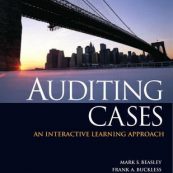
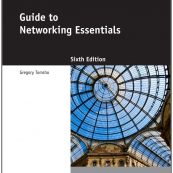

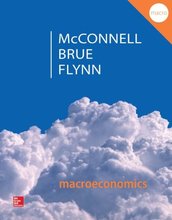
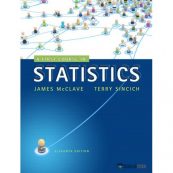



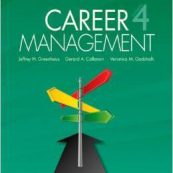
Reviews
There are no reviews yet.